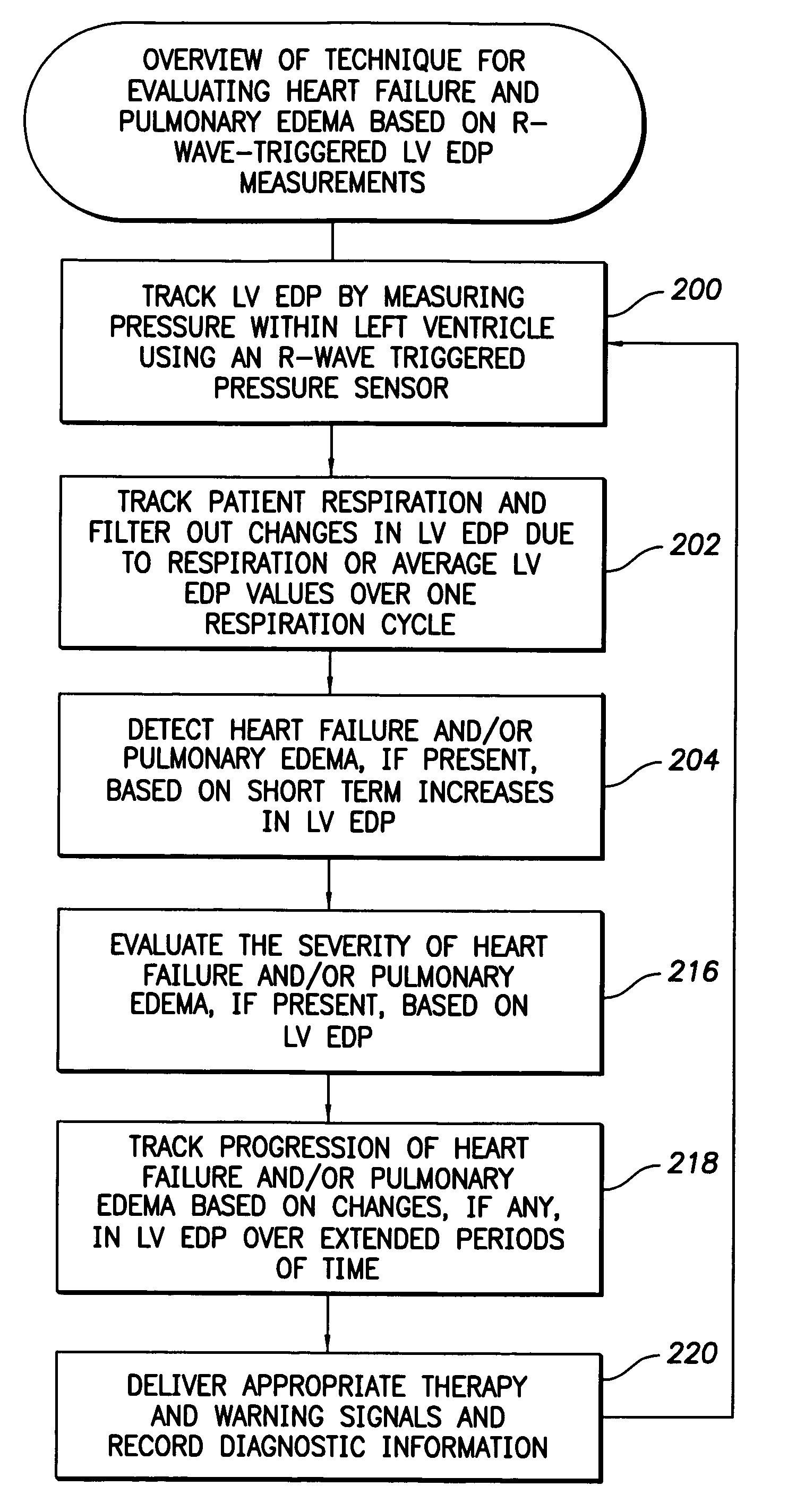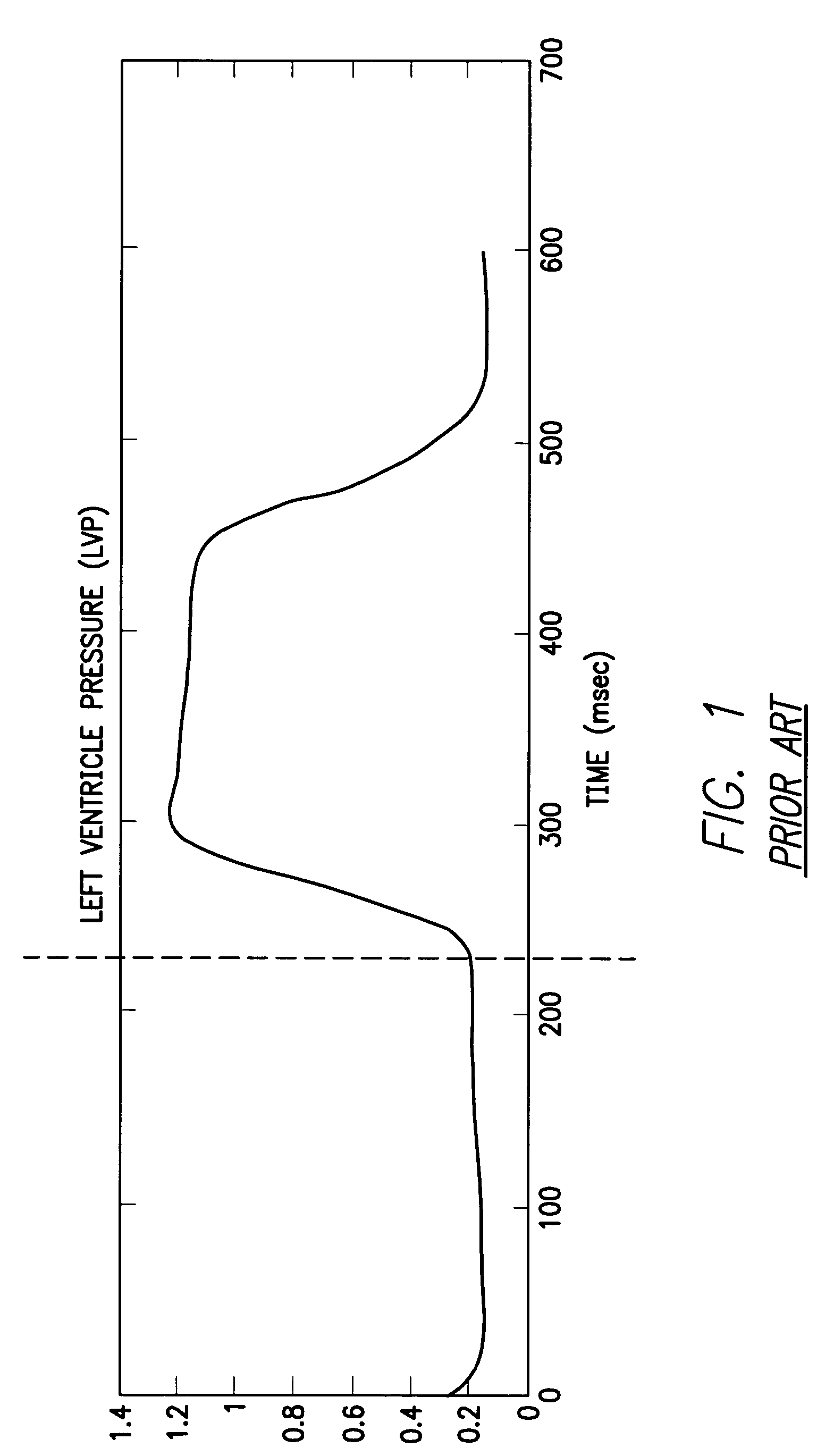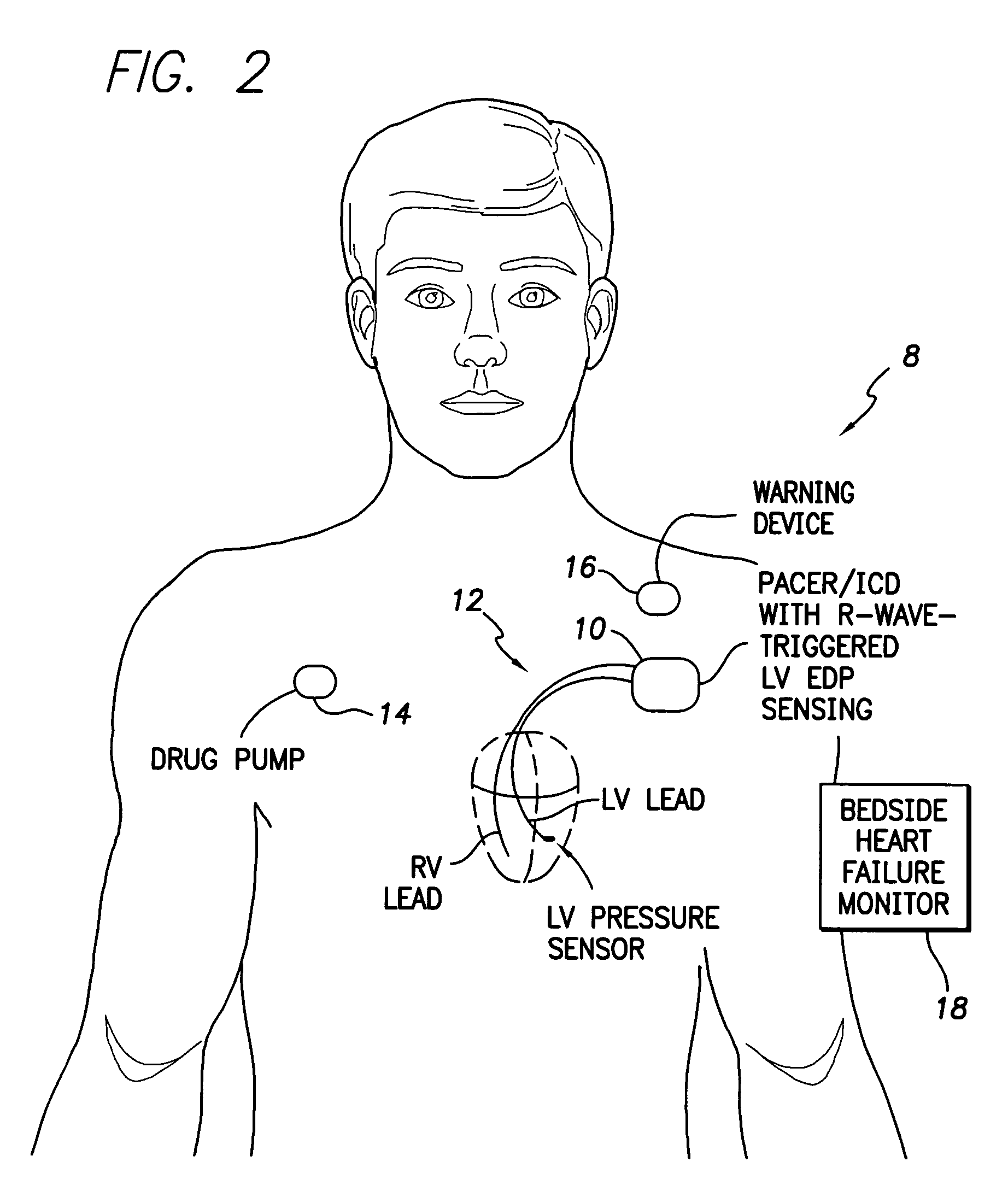System and method for detecting heart failure and pulmonary edema based on ventricular end-diastolic pressure using an implantable medical device
a medical device and end-diastolic pressure technology, applied in the field of implantable medical devices, can solve the problems of insufficient ejection or filling of blood in the ventricle, loss of propulsive power of the heart, and impairment of arterial circulation, so as to achieve the effect of efficient use of data processing and memory resources within the implantable devi
- Summary
- Abstract
- Description
- Claims
- Application Information
AI Technical Summary
Benefits of technology
Problems solved by technology
Method used
Image
Examples
Embodiment Construction
[0022]The following description includes the best mode presently contemplated for practicing the invention. This description is not to be taken in a limiting sense but is made merely to describe general principles of the invention. The scope of the invention should be ascertained with reference to the issued claims. In the description of the invention that follows, like numerals or reference designators will be used to refer to like parts or elements throughout.
Overview of Implantable System
[0023]FIG. 2 illustrates an implantable medical system 8 capable of R-wave triggered LV EDP sensing, i.e. capable of detecting LV EDP by triggering a ventricular pressure sensor to detect pressure during the end diastolic phase of a heartbeat based on R-wave timing. The system is further capable of detecting medical conditions affecting LV EDP, such as heart failure or pulmonary edema, evaluating their severity, tracking their progression and delivering appropriate warnings and therapy. To this e...
PUM
 Login to View More
Login to View More Abstract
Description
Claims
Application Information
 Login to View More
Login to View More - R&D
- Intellectual Property
- Life Sciences
- Materials
- Tech Scout
- Unparalleled Data Quality
- Higher Quality Content
- 60% Fewer Hallucinations
Browse by: Latest US Patents, China's latest patents, Technical Efficacy Thesaurus, Application Domain, Technology Topic, Popular Technical Reports.
© 2025 PatSnap. All rights reserved.Legal|Privacy policy|Modern Slavery Act Transparency Statement|Sitemap|About US| Contact US: help@patsnap.com



